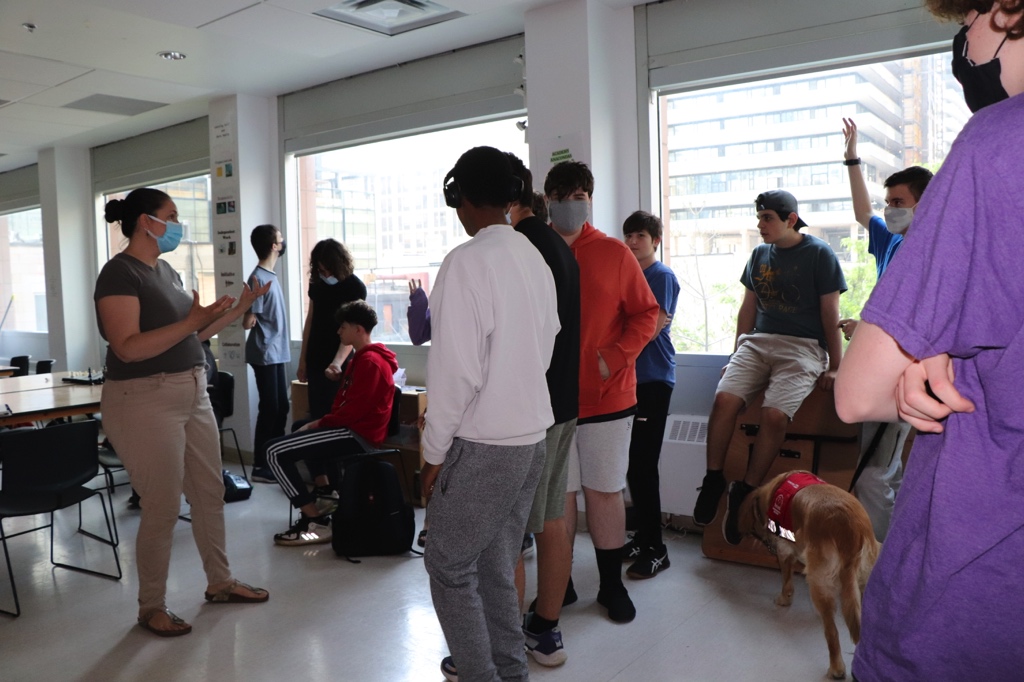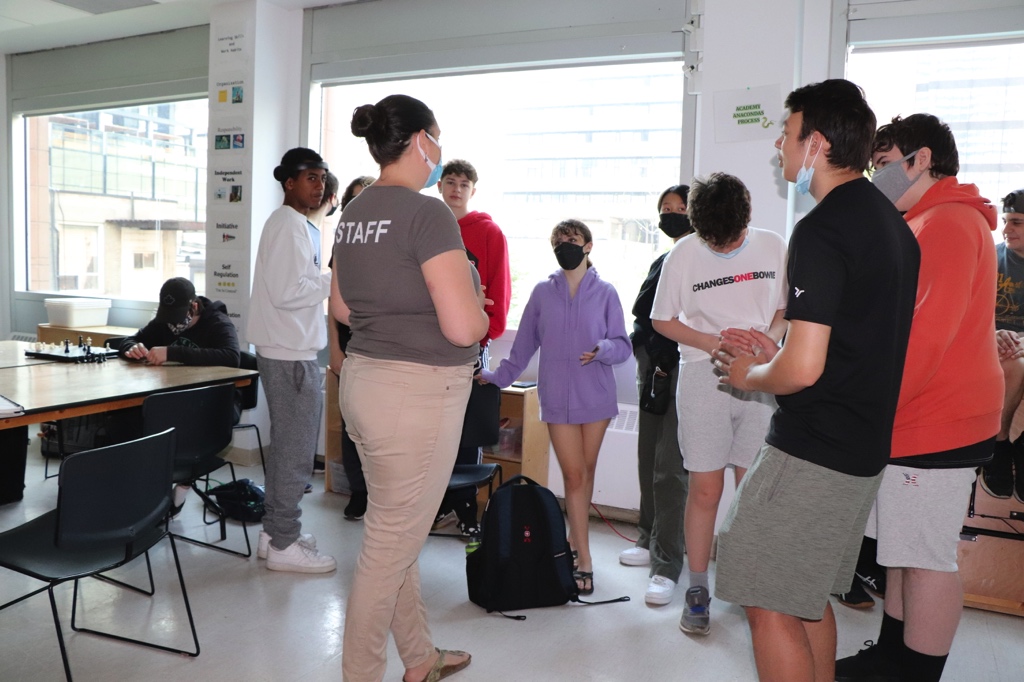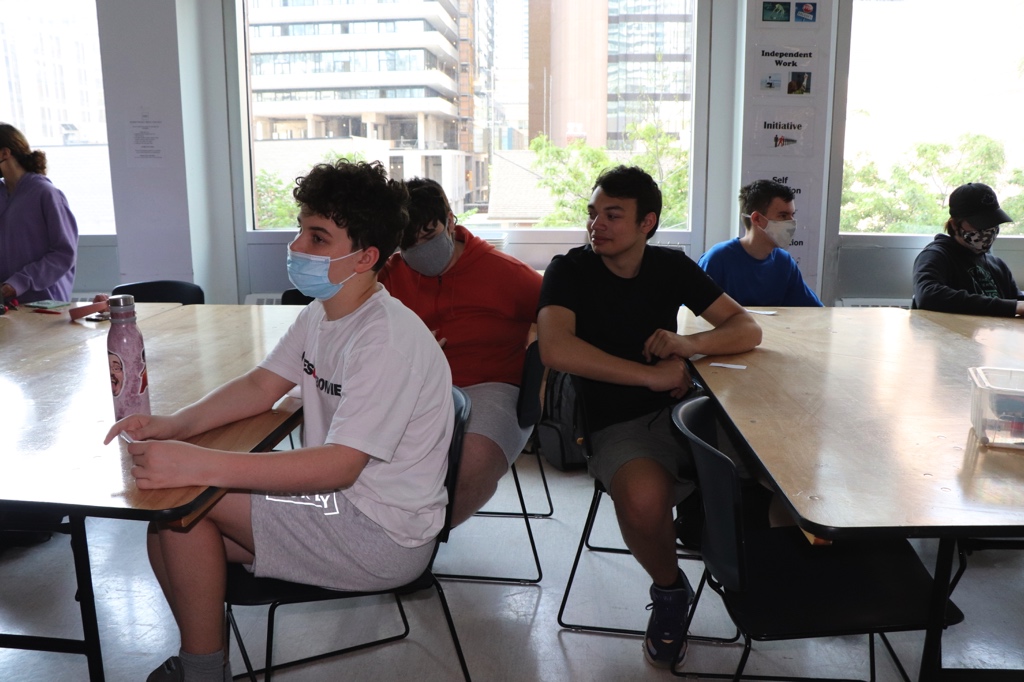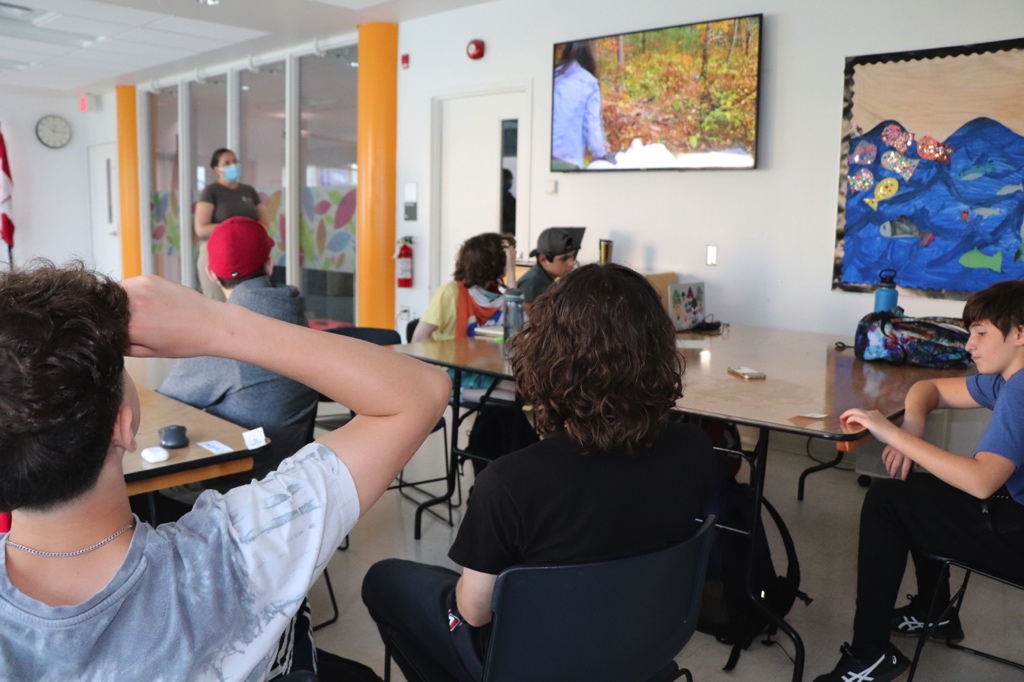In Middle School, the students collaborated to build a wetland and replica Roman style aqueduct. One student explained, “With hard work and dedication, we made something remarkable.” The students planned, constructed and adjusted the designs in order to model their cross-curricular learning between science and social studies. Together, we have been investigating the features of wetlands including the biodiversity that maintains the cycles within these diverse habitats. The Toronto Wildlife Centre most recently visited the Middle School, delivering the program Kids Go Wild and providing insight on how to protect wildlife in urban spaces including decorating windows and keeping cats indoors.
The students continue to investigate natural wild spaces in the city for inspiration including Ramsden Park. One wetland, explains a student, is more realistic with dirt, seeds, rocks and the sponges represent how the wetland acts as the absorbent for pollutants from the atmosphere. The other wetland is a model of a wetland with plasticine and plastic to represent human impacts on the environment.
For the aqueduct, the students used cardboard, hot glue, and wax paper to construct a functioning system that channels water. A student described their tremendous efforts and how they had “fun” participating in the build. The opportunity encouraged them to maintain their motivation and inspired their individual creativity.
























